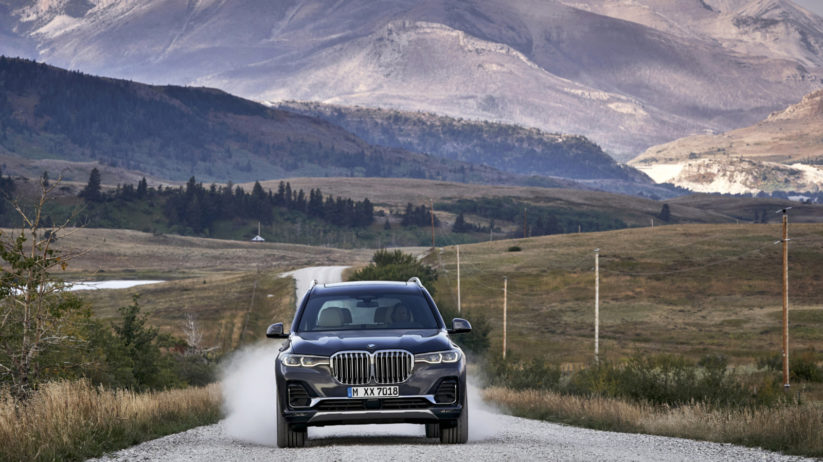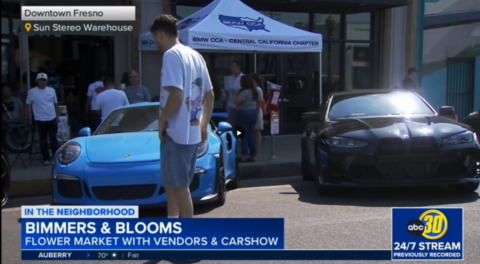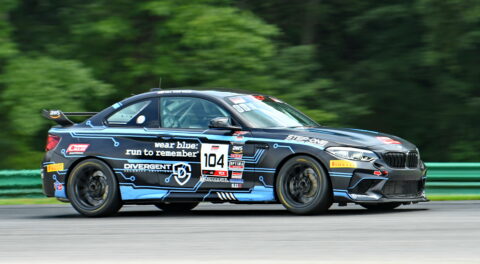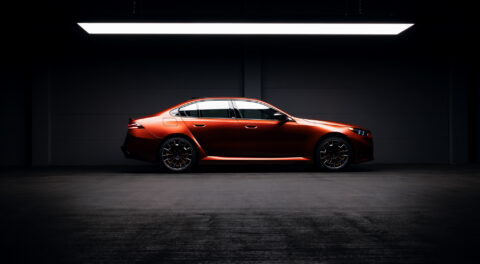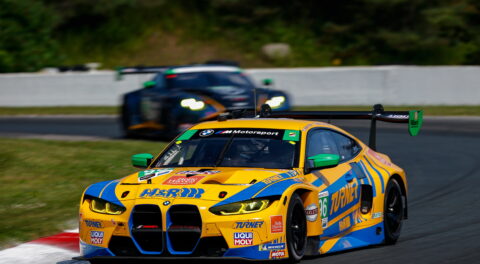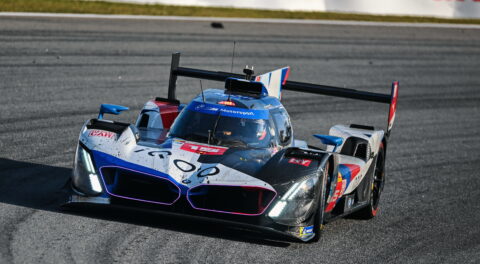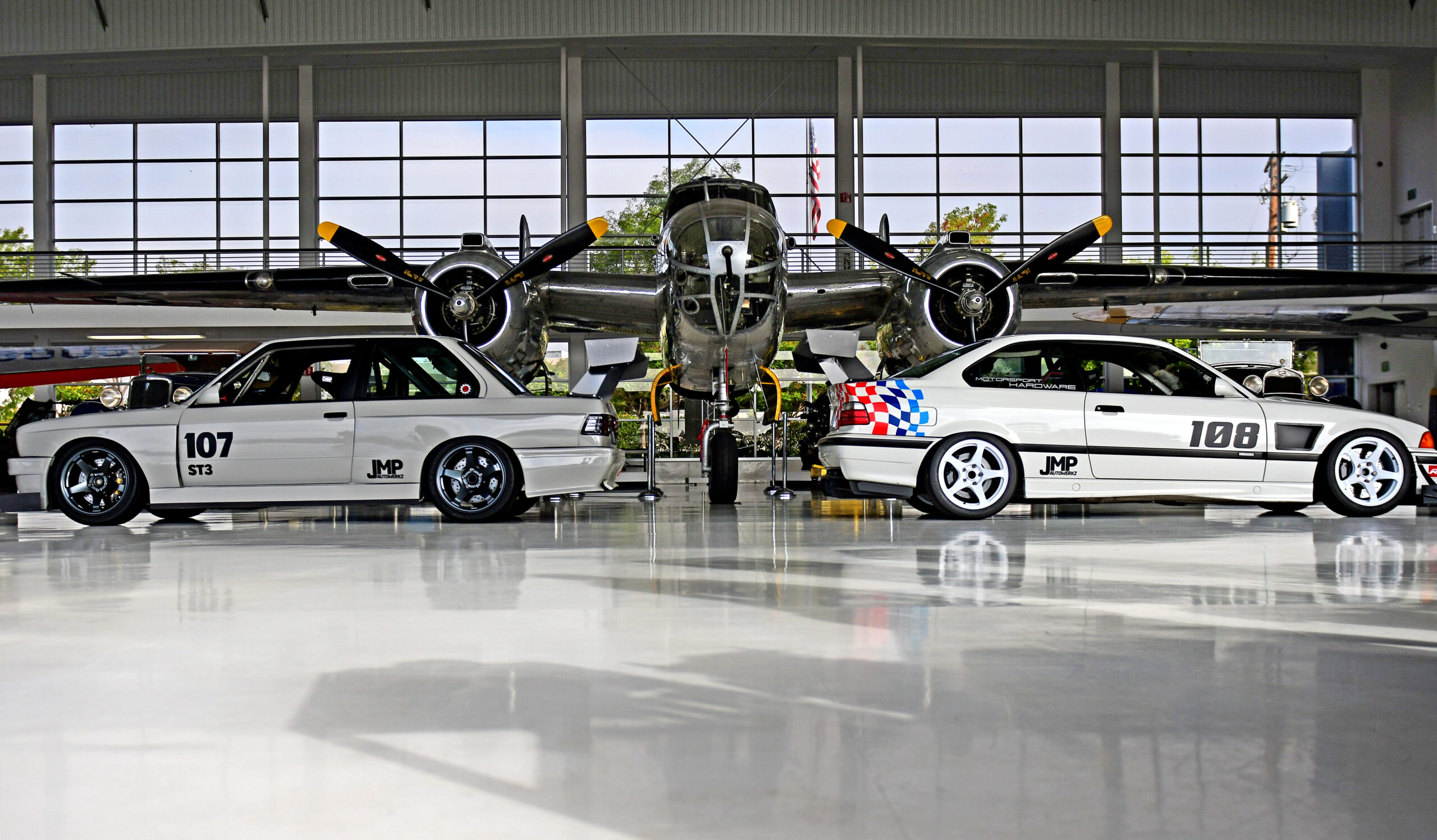It is sometimes hard to believe that the full-size SUV segment continues to grow. Kicked off decades ago with the Chevrolet Suburban and a few other era competitors, this space has undergone frequent reorganization and change, and over the past decade, a number of luxury players have entered the scene, offering their own version of a range-topper with three-row seating. BMW and Mercedes-Benz helped introduce us to the possibility of a large but still functional and sporty SAV as the former terms them, but more recently, it’s been Audi, VW and MB who’ve taken things a step further by introducing models with standard three-row seating. The X5 has offered a split tailgate and optional third-row seating for a few generations now, and towing capacity has always been impressive for its class, but times continue to change, and now there is a new, and very important member of the X lineup.
To avoid getting too pedantic with the details about engines, technology and other elements, the X7 shares quite a bit in common with the G05 X5, which is just about to go on sale. For U.S. customers, there will be a choice between two models, the N63 V8-powered X7 xDrive50i, and the B58 straight six-motivated X7 xDrive40i. Both will be mated solely slightly different versions of the ubiquitous ZF eight-speed automatic, and features like third-row seating, BMW Live Cockpit Professional and air suspension will all be standard. In terms of direct competition, the X7 will slot against the Mercedes GLS and Audi Q7, the former of which is now in its second generation, but only offered here with a choice between four- or six-cylinder engines. Other counterparts include the Range Rover, Cadillac Escalade, Toyota Land Cruiser-based Lexus LX, and the Infiniti QX80. The Volkswagen Atlas can be had for far less money than any of these, but also bears mentioning as it is another recent entrant into the market, and offers similar capacities thanks to standard third-row seating.
So what does it all mean? Despite unpredictable energy costs and technology heading in the way of electrification, demand remains strong for largest SUVs automakers can produce, and BMW will not sit idle while other manufacturers gain market share.
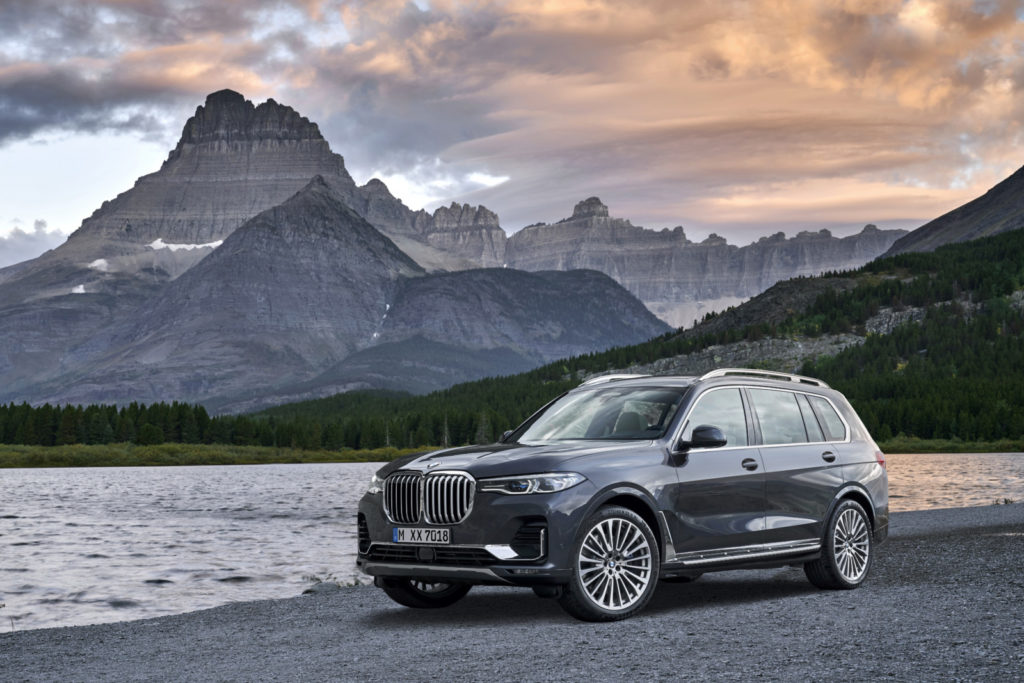
There is more to the story than that though, because the X7 isn’t just another option for individuals with large families to consider. Instead, the opulently equipped and elegantly presented X7 also occupies the spot of a flagship within the BMW lineup. The digit seven has stood for something special within BMW model offerings for over 40 years now, and even though there have been cameos made by the 8 Series, it’s the 7 Series that has been the perennial tip of the spear when it comes to technology and design advancement. While the X5 has remained a standard in the SAV segment since it was introduced twenty years ago, the model has always been a bit more utilitarian in its approach to the world, even with the newest generation making significant strides in the ways of luxury trimmings and standard equipped tech. Now, with the X7 on the immediate horizon, BMW has a real upright competitor to use in its continued offensive in the full-size luxury segment.
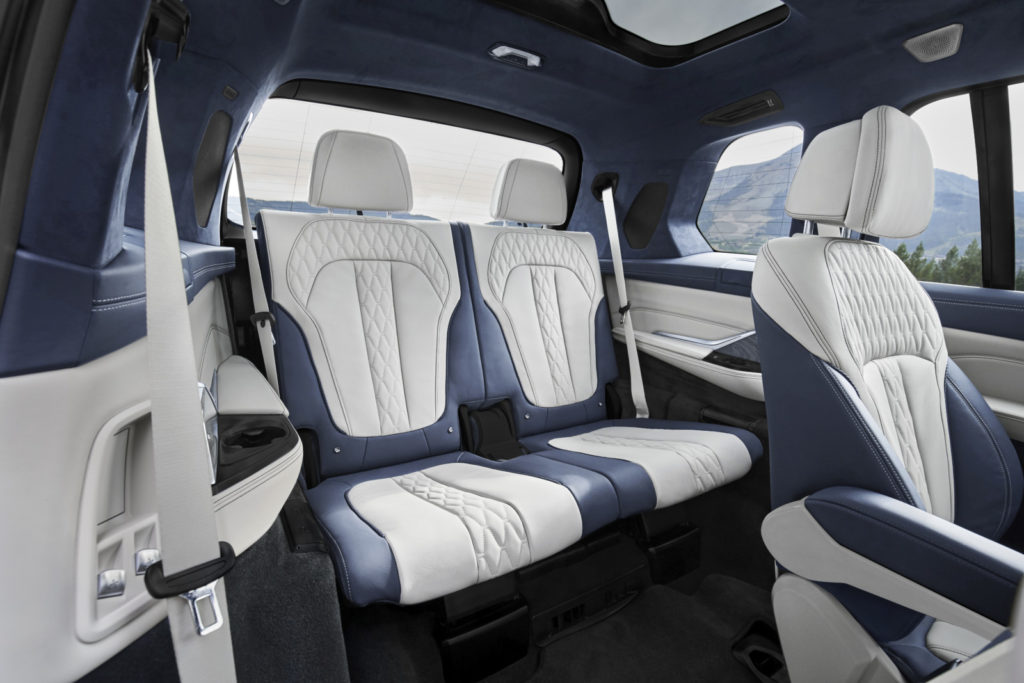
Looking at the interior, it’s clear BMW is serious about making a dent in the targeted market segment. Finishings are among the nicest currently available in any BMW Group product outside of Rolls-Royce, and seem almost directly in line with what is available within the 8 Series. While most third row seats are a bit of an afterthought no matter how you look at them, the split bench in the X7 is offered with options that can bring it up to a level beyond that of what is found in the GLS and Q7, with uncompromised space, arm rests and USB ports at the ready. In total, seating capacity can accommodate a total of seven, although the pictured example is fitted with optional second row captain’s seats as opposed to another folding bench, which reduces the number to six. Every seat is power adjustable, and Vernasca leather is standard—the pictured example is fitted with BMW Individual Ivory White full leather, with Night Blue highlights. Trunk capacity is already voluminous at 48.6 cubic feet, but can be expanded to over 90 with the seats folded down.
A three-section panoramic sunroof, ambient lighting and four-zone climate control are standard, but things can be upgraded further by optioning five-zone climate control, the ambient air package and panorama glass roof Sky Lounge, along with glass switchgear and controls, on display below. Six-cylinder versions will come standard with a hi-fi audio system making use of 10 speakers powered by 205 watts, while moving up to the V8 means you can be treated to the standard Harman Kardon surround sound system. The audiophiles among us can of course opt for the top-shelf Bowers & Wilkins Diamond Surround Sound system, which should offer quite the aural experience, thanks to 1,500 watts driving a total of 20 speakers.
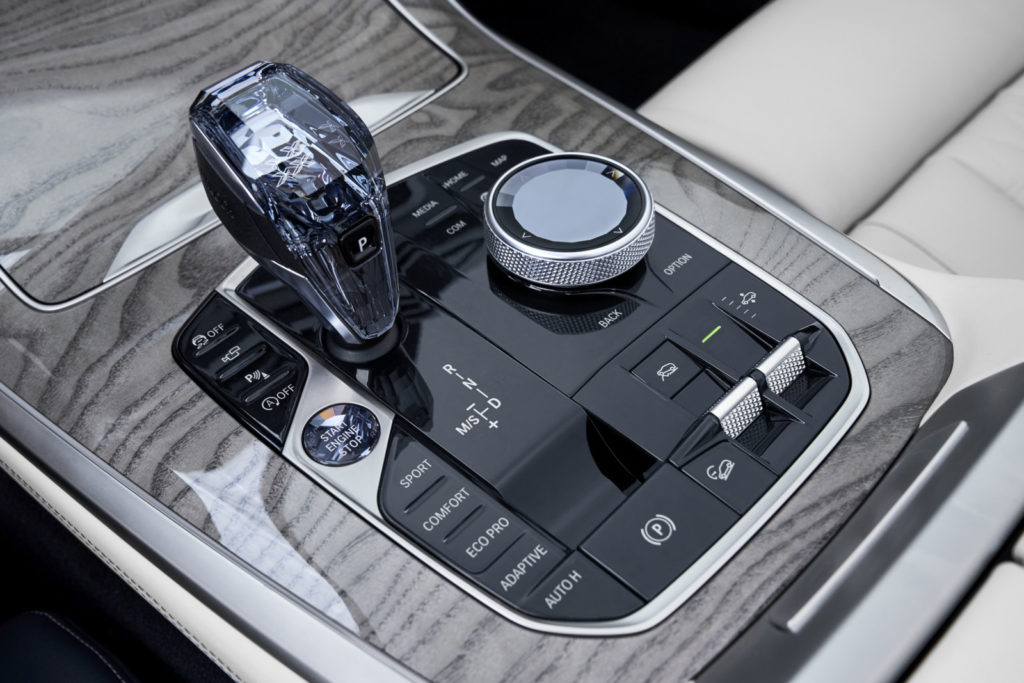
The control pad above features the shifter, iDrive controller, Executive Drive Pro buttons and the Driving Experience Control switches. As mentioned above, these press photos are of an X7 optioned out with BMW Individual leather upholstery and glass control surfaces, both of which are quite a sight. In addition to the aforementioned drive mode controls, the tab which operates the electric parking brake can also be seen. Getting more specific, the switches on the righthand side control the standard air suspension, along with off-road modes that are part of the optional Off-Road package, which enables selection of different preset vehicle characteristics for different terrain such as sand, gravel, rocks or snow—BMW brands the different modes by installing an x in front of each one; xSand, xRocks, xGravel for example.
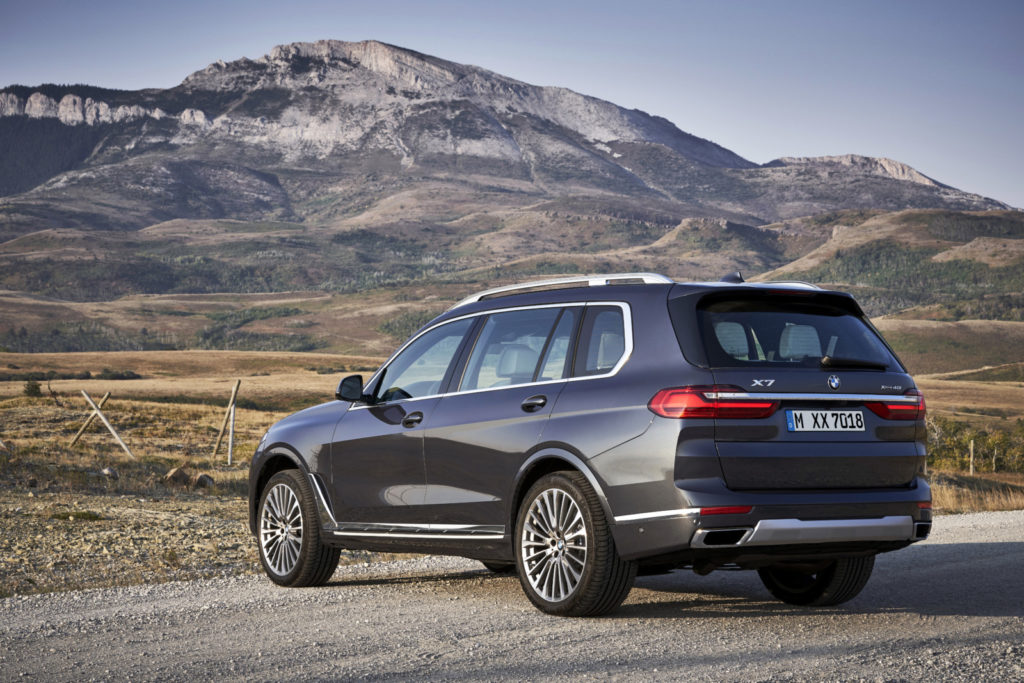
The exterior is clearly a serious affair as well. More than a few have poked fun at the size of the kidney grille, and their complaints aren’t completely without merit—BMW says it’s the largest kidney grille ever designed for any model past or present. Nevertheless, together with the slim but highly functional headlights, the imposing front end design has a certain regal presence to it, not unlike the unmistakable look of a Rolls-Royce, vintage or modern. Speaking of the headlights, LED units are standard across all models, while BMW Laserlight versions are optional, but will likely be available exclusively in Europe.
The standard air suspension adjusts ride height automatically, but can also accommodate to loading and unloading the split tailgate by kneeling the rear end down 1.6 inches. The optional off-road modes discussed above will also have influence, and in different conditions, ride height drops by 0.8 inches when the vehicle exceeds 85 MPH with sport mode engaged. The driver has a say as well, via the switches on the center console control panel. For the most challenging terrain, the system can raise the X7 a total of 1.6 inches, for total up and down range of 3.2 inches.
The split tailgate is another feature many have come to strongly appreciate their X5 having, and every generation since launch has come with it. The X7 offers the same, much in line with other premium competitors from the ubiquitous Range Rover to the brand new Rolls-Royce Cullinan. Interestingly enough, this is an area where other suitors like the Q7, GLS and even the Bentley Bentayga fall short, instead using a conventional lift gate design.

There are plenty of other more finite elements to pay attention to as well, like the bits of different trim that line the rockers and elsewhere, which help to set the range-topper apart from the more utilitarian X5. The look is continued elsewhere including front fender vents and the dividing line on the tailgate. The greenhouse seems to take heavy influence from the X5, but with proportions scaled up for the larger body. Twenty-inch wheels come standard, but other designs in 21- and 22-inch sizes can be specified. Taillights also make use of a slim design and convey their information by way of a large solid LED band, among other illuminated areas.
In addition to the eye-catching kidney grilles, some are also in awe of the sheer size of the X7, even though it’s competition is pretty obvious. BMW itself says the X7 is the largest X model ever, and the dimensions do not mislead; 203.3 inches long, 78.7 wide and 71.1 tall. It’s not the biggest BMW though, as that title is retained by the G12 long wheelbase 7 Series which measures just a few inches longer overall and in terms of wheelbase.
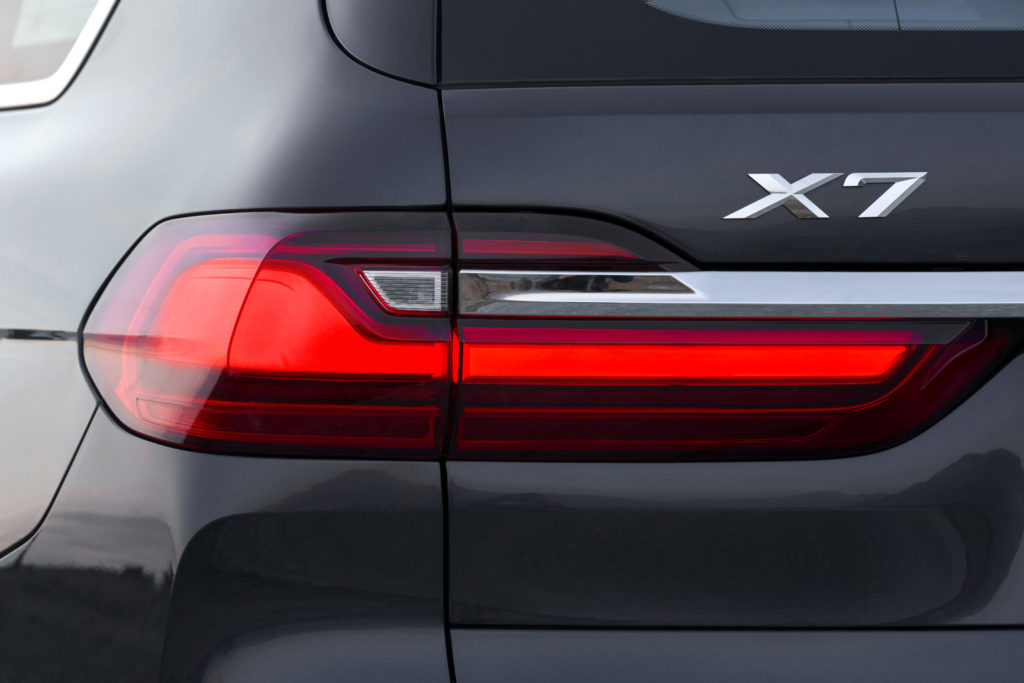
Technology is expectedly coursing through the entire vehicle. The array of cutting-edge driver assistance systems makes up a long list, and many of them come standard. In select instances, the X7 can all but drive itself when prompted or needed, and for those worried about the high-profile, active roll stabilization can be optioned. But beyond this new invisible hand keeping us between the white lines, the lineup of tech is perhaps best appreciated from inside. Live Cockpit Professional, running Operating System 7.0 is standard, which means X7 buyers will have vital vehicle, navigation and communication information conveyed to them by way of large digital displays, such as the fully-digital and highly malleable instrument cluster, and the large 12.3-inch iDrive Control Display. BMW Intelligent Personal Assistant will also be there, to answer questions or manage tasks in a more human fashion than ever before.
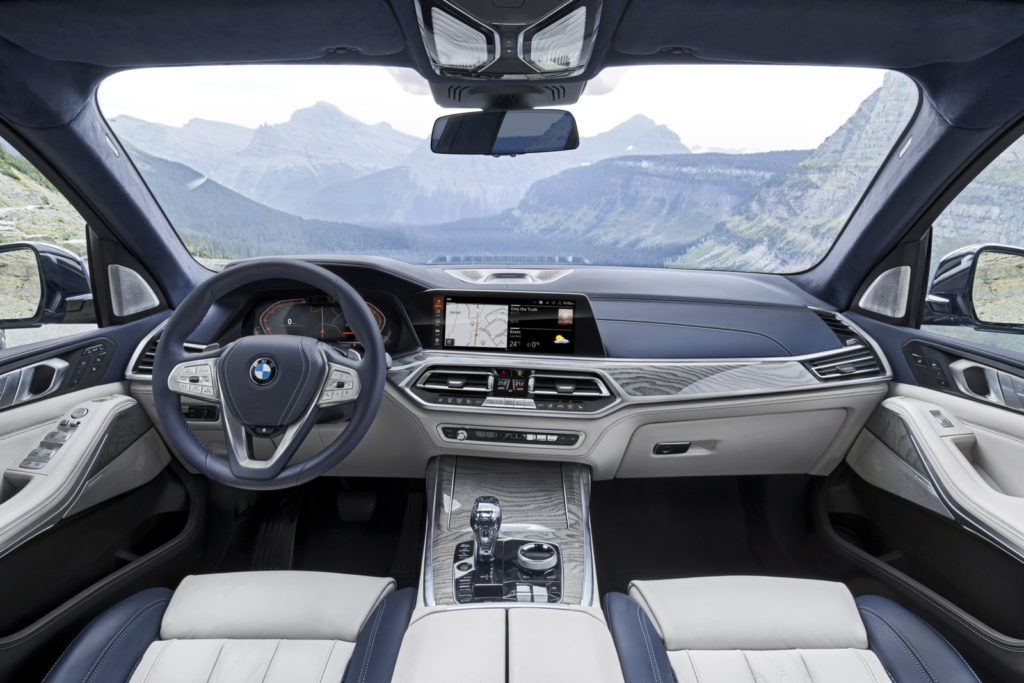
Although a total of four models have been announced, with two diesels scheduled to debut for Europe, U.S. buyers will be limited to gasoline power plants. The X7 xDrive40i will come with a B58 six cylinder beneath the hood, which sounds very similar to the unit powering the comparable X5. Figures include 335 hp between 5,500 and 6,500 rpm, along with 330 lb. ft. of torque available from 1,500 rpm to 5,200, and thanks to standard xDrive and the ZF eight-speed auto (more specifically the 8HP51), the sprint to 60 mph occurs in just 5.8-seconds—impressively quick for a 5,370-pound SAV.
Stepping up to the eight-cylinder means your X7 will be motivated by an N63 V8, which once again sounds like it shares much in common with the X5’s unit. Output of 456 hp from 5,250 to 6,000 rpm with 479 lb. ft. of torque hanging around from 1,500 to 4,750 has been announced, along with advancements for the high-tech V8 that include all-new thermal plates shielding the cylinder heads and block from the exhaust manifold. It also boasts a redesigned ignition system to aid in starting when automatic start and stop is enabled, which sounds like it might be similar to the top-dead-center concept used by Mercedes. The transmission is a stronger version of the same underlying design, internally coded 8HP76, while xDrive is also present. Nonetheless, even with the large bump in power, it’s tough to move the needle for a vehicle of this size and weight—5,617 pounds for the V8 model—and the zero to 60 time only drops to 5.2 seconds, which is still quite respectable.
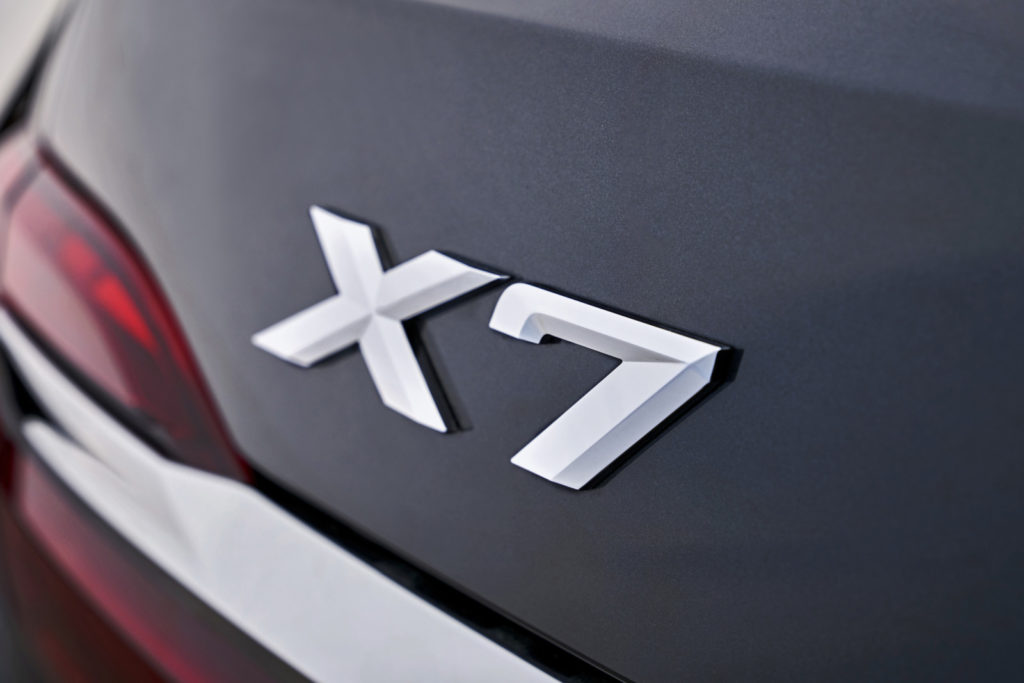
After years of speculation and a good number of months spent scrutinizing the concept and other rumors, the X7 is finally here. Longterm BMW aficionados might not be ready for such an addition to the model lineup, but the general car buying public most certainly is. It won’t be long before we start to see them on the road after their 2019 introduction, and as another member of the X family, they’ll be rolling off their own dedicated line at Spartanburg. We look forward to putting one through its paces, and seeing if BMW struck the right balance of size, luxury, tech and performance to take a bite out of the market.—Alex Tock
[Photos courtesy BMW AG.]

